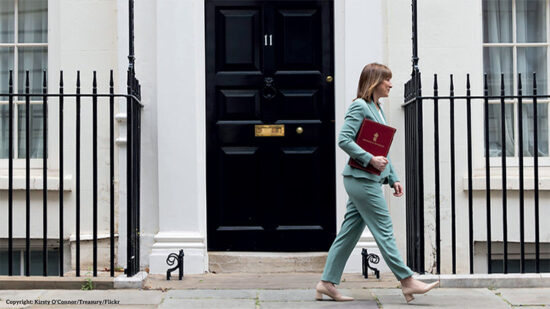Sterling
Sterling finished last week mixed, higher against the Euro and lower versus the dollar, although ranges were tight against both. There were three important data releases which gave differing results, but there was some dovish news from the Bank of England when their Monetary Policy Committee Minutes were released. Sterling continues to be influenced more by events overseas, particularly in Europe, but should continue to hold its own in the short term.
Sterling continues to be rangebound, with little in the way of data to set a trend. Events in Europe will have more influence on Sterling in the short term, and with the Greek elections out of the way, there may be a period of stability in Euroland for a while. If this is the case, then the Euro stands to gain as investors tentatively move back into the currency. We would see a weaker Sterling against the Euro in the week ahead, with a 1.5500 to 1.5750 range versus the US Dollar.
US dollar
With little in the way of any major data releases, the dollar drifted through last week, being pushed around by events in Europe. The Federal Reserve Chairman Ben Bernanke announced an expansion in ‘’operation twist’’, whereby the central bank will buy longer-maturity bonds and sell a similar amount of short term debt. This had little impact on the dollar, with no important data due out this week, the general malaise may continue for a while.
The dollar remains the currency of choice in troubled times and its safe haven status will ensure that there will be no collapse. Issues in Europe will rumble on for some while, although there may be a period of stability now the Greek elections are out of the way. If this is the case, risk trades may start to reappear and the dollar could lose modest ground in the next few week, until the next problems in Europe rear their ugly head.
Euro
The Euro started last week on the front foot with the 2nd Greek elections providing the centre-right New Democracy party with 129 seats and a chance to form a government. Hopes were high that a coalition could be formed that would implement the austerity package, albeit with a concession here and there. The Far East reacted first thing on Monday by pushing the Euro higher to 1.2745 (1.2670 close on Friday) versus the US dollar and 1.2325 (1.2392) against Sterling, before a reality check set in when the European markets opened.
New Zealand Dollar
The kiwi dollar continued to strengthen versus the pound this week as data showed New Zealand is posting decent economic growth, although risk aversion ahead of last weekend’s European summit saw it give back ground overnight last night.
Support at NZ$1.9600 should be tested again in the coming days, resistance is at NZ$1.9940/50, but the kiwi is more likely to strengthen from current levels against the struggling pound.
Australian Dollar
The Aussie dollar gained versus the pound through last week before giving back much of the ground over the past 24 hours as risk aversion mounted following bank downgrades by ratings agency Moody’s and ahead of last weekend’s crunch European summit.
GBP/AUD tested below A$1.5400 before rebounding strongly. Provided last weekend’s EU summit doesn’t undermine investor confidence, another move lower seems likely in due course. In the meantime, we expect more range bound trading. Resistance is around A$1.5720.
Canadian Dollar
The Canadian dollar (or ‘’loonie’’ as it is known in the markets) spent a quiet week range bound against its major counterparts which was a good result considering the fall in the oil price to an 18 month low. Data releases were concentrated towards the end of last week, and a speech by Bank of Canada Governor Carney was awaited for any signs of a change in central bank policy.
The Canadian dollar will continue to be influenced by events overseas, and particularly in Europe. Against Sterling, a trading range of 1.58 to 1.62 has persisted for some time now and we see no reason for this to break in the next week with a bias to the upside as commodity prices continue to ease. Against the US Dollar we see an even tighter range of 1.01 to 1.0300 this week.
Chinese Yuan
The USD/CNY rate continues to track movements on EUR/USD even as signs emerge that the Chinese economy will rebound this month following the recent measures taken by the government to support growth.
The result of last weekend’s summit between the new Greek government and other EU leaders will likely set the tone for the coming week’s currency movements. Any negative developments will see the euro struggle which is, in turn, unlikely to tempt the PBOC to set a stronger rate for the yuan. On balance, further range trading from 6.35 up to 6.37 seems the most likely through to the end of the month.
Japanese Yen
The Yen continues to be a major safe haven currency and as such should not lose too much ground in the short term. The currency has appreciated approx 6 per cent from the years low in March and reflects the fact that investors are happy to hold Yen even while interest rates are around zero. Indeed overseas investors owned 8.3% of Japanese Government Bonds as at the end of March, the highest since 1979, the first year when comparable data was available. This is despite the rating agencies downgrading the nation’s debt.
Other high ranking officials continue to say that they are monitoring the level of the Yen carefully and are ready to act if needed. This is the usual mantra, but in reality there is little that they can do other than intervention to stop the appreciation. In the longer term, the increasing trade deficits, and the outsourcing of production will have a negative effect on the Yen and this may be accelerated by the nuclear accident and the need to import fossil fuels. But for now, the Yen should hold steady and a move down towards 123.00 this week is possible.
South African Rand
The GBP/ZAR rate continued to trade in its recent ranges last week as fears over the outlook for Europe weighed on the South African currency ahead of last weekend’s summit meetings.
The GBP/ZAR rate stopped short of support at R12.80 this week and has since pushed back towards the R13.14/15 region. The outcome of this weekend’s meetings will be key, with negative news sending the rate higher – possibly towards R13.35, whereas positive news should see support tested again.
For more currency data and information on how to assist your clients with their international money transfers, please visit the International Adviser Currency Zone powered by Moneycorp.








